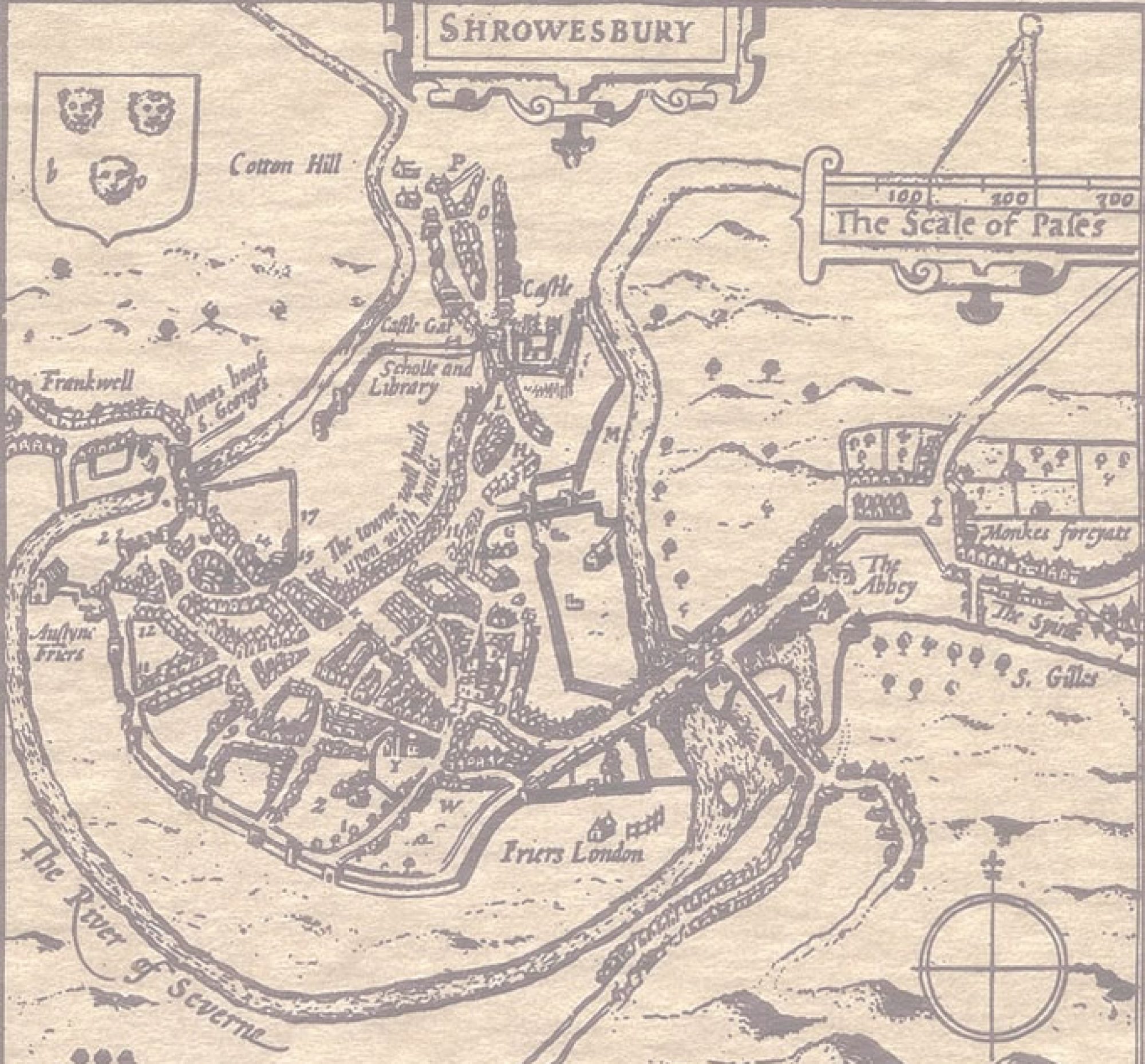Before about 1690 Hill’s Lane (between Barker Street and Mardol)was called Knucking or Knockin Lane or Street. [footnote 1] This may have been a corruption of the Old English for ‘cucumber’, since the street was curved with narrow exits at either end. The main residence in the street is Rowley’s House and Mansion, formerly the Museum and Tourist Information Centre and now the home of the University.
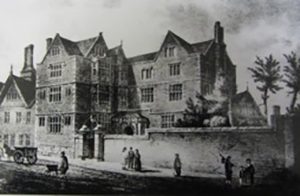
Rowley’s House is the half-timbered part of the building and it was built (or rebuilt) by William Rowley (1572-1645) in the late 1500s. [footnote 2] He was a prosperous draper and brewer, so prosperous in fact that he could afford to also build the oldest surviving brick building in Shrewsbury, Rowley’s Mansion, next to Rowley’s House. [footnote 3] This was finished around 1618. [footnote 4] William Rowley was one of the most important people in the town, and was a prominent Puritan. In the decades leading up to the Civil War he was repeatedly in trouble with the Church of England establishment for refusing to conform to rules such as the one that required that no religious meetings should be held in homes. [footnote 5]
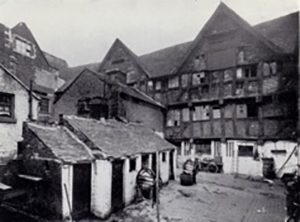
When William Rowley’s son died in 1670, Alice, one of his daughters, inherited all the Rowley wealth in Shrewsbury, including Rowley’s Mansion. She married John Hill (1650-1731), who thus acquired Rowley’s House and Mansion. [footnote 6] He became an alderman on the town council in 1677, and renamed Knuckin Street after himself.
When James II came to the throne in 1685, a turbulent period in national politics began. James was a Catholic and was intent on substituting any of his opponents with those who were not active in the Church of England. These included Catholics, dissenters, and those who were indifferent to religion. [footnote 7] Shrewsbury did not escape this process, and in 1685 James decreed that the Corporation should have a new charter, and he appointed Richard Mucklestone as Mayor. Later, on January 1st 1688 he removed Charles, Earl of Shrewsbury, from his position as Recorder of the town and with him many of the council officials, including Alderman John Hill.
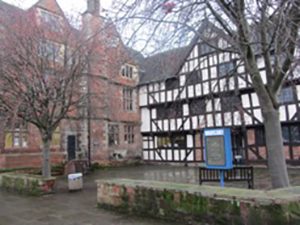
During 1688 King James’ popularity rapidly waned and, perhaps to curry favour with those he had so summarily dismissed, on 17th October he made an order in Council for the removal of all the corporation officers who had been appointed by the crown since 1679. This included Mayor Mucklestone, and Roger Griffiths was elected in his place. He, however, only lasted a short time before he was replaced by Collins Woolrich, who himself was replaced shortly after by John Hill, who served his full term. [footnote 8] Presumably the frequent changes represented the jockeying for position of the various factions, which culminated in the ‘Glorious Revolution’ of November 1688 and subsequent coronation of William III and Mary. After the Revolution it fell to John Hill as Mayor to write to Lord Newport, the Lord Lieutenant of Shropshire, that ‘the town is open and ungarrisoned, and that your Lordship may enter without any opposition by us or any others…’ [footnote 9]
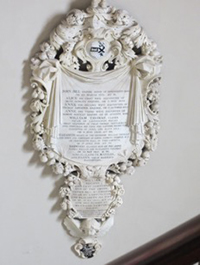
The tone of the letter indicates the generosity of John Hill’s character, which was helped by his significant wealth. It appears that part at least of John Hill’s wealth came from a share in a sugar plantation in Barbados, which he had inherited from the Rowleys, along with the mansion. So it is not unreasonable to say that this corner of Shrewsbury has a link to the Caribbean slave trade. [footnote 10]
Footnotes
[1] JL Hobbs, The Street Names of Shrewsbury, Wilding’s, 1954
[2] HE Forrest, The Old Houses of Shrewsbury, Wildings, 1920, p.52ff
[3] “In depth” William Rowley (1572-1645) of Rowley’s House and Mansion, Hill’s Lane, www.discovershopshire.org.uk
[4] Plaque on the building; one of the old drainpipes had this date – AW Ward, An Account of Rowley’s House, Shrewsbury, Wildings, 1938
[6] Hill family memorial, St Chad’s Church
[7] H Owen and JB Blakeway, History of Shrewsbury, Vol. I, pp 497-501
